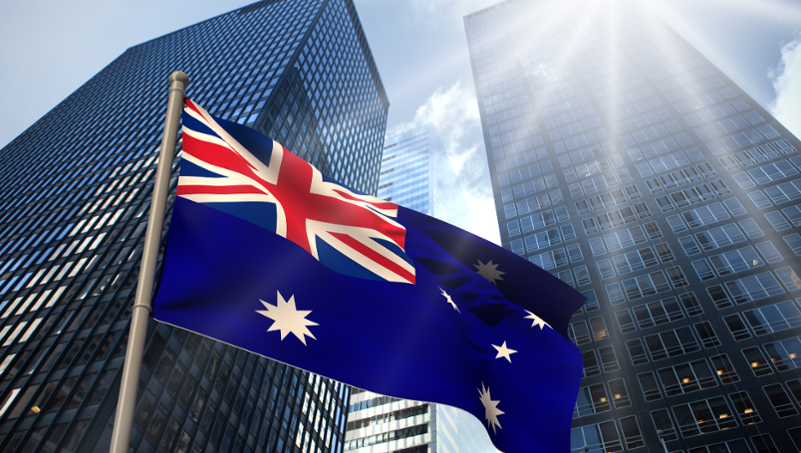We have now been in the global coronavirus pandemic for around a year and a half and equity markets have mostly regained all their losses and triumphantly charged back to, or at least close to, their previous peaks.
While the impact of coronavirus on people’s lives has been much more negative than originally postulated, the impact on the economy and markets has probably been much more limited than expected. In Australia, while the economy entered a recession in 2020 (for the first time in around 30 years) and unemployment increased from the low 5-percents to the mid 6-percents, this was still much better than originally feared.
In 2021, Australia’s GDP is expected to grow very strongly (one of the highest growth rates for several decades), with strong employment growth and the unemployment rate expected to continue to decline in the mid-to-low 5-percents. The end of March 2020 saw the equity market bottom around 35% down from its peak but then rally incredibly quickly and recover all the market losses within around a 12-month period.
When we examine all the major market declines in Australia’s history, this recent pandemic-induced decline has been followed by the quickest and fastest recovery by far. At the start, people were questioning whether this would be a V-, W-, Z-, N- or, even worse, an L-shaped recovery. Now, with hindsight, we can very clearly see it as a sharp V-shaped recovery: a truly amazing result given the havoc the pandemic has wreaked on people’s lives.
It would seem the main reason for the divergence between the severity of the pandemic and the impact on the economy and markets has been the fiscal stimulus from the government and the monetary stimulus from central banks. Both responses have been extraordinary and created strong tailwinds behind the economy and asset prices. Central banks have taken official interest rates to close to zero to try to stimulate the economy, but this also increases asset valuations, particularly asset valuations with long duration.
The risk-free rate is very important in the valuation of businesses and all assets. A very low risk-free rate creates a very high asset value. While monetary policy is stimulatory, the real heavy lifting in this crisis has been done by fiscal policy. The furlough schemes implemented around the world (including Jobkeeper in Australia) worked very well, keeping people employed and with money to spend. This also played an important role in keeping the unemployment rate relatively low.
Two strong themes in the market over at least the last nine months have been: (1) recovery from COVID-19 and (2) inflation and the steepening yield curve. I will examine each in turn.
1 Recovery from COVID-19
Australia has managed the COVID-19 pandemic better than almost any other country on earth. Australia’s GDP is now growing strongly with the tailwinds of fiscal and monetary stimulus and improved demand from somewhat of a return to normalcy. We have entered phase one of the recovery. Full recovery seems to now be dependent on the vaccination rollout and the opening of national borders. The vaccination rollout has been slowed by logistical issues as well as some health issues with the AstraZeneca vaccine. The Federal Government has focused on domestic production of the AstraZeneca vaccine but, given some rare blood clotting issues, many in the Australian public are waiting for the Pfizer vaccine.
Whatever happens, it now looks like it will take until at least the end of CY2021 before a sizeable portion of the Australian population will be vaccinated. The delay in the vaccination rollout means that the full opening of the national borders will not happen until at least 2022. While the Federal Government is looking to open bi-lateral travel bubbles (New Zealand and, maybe later, Singapore), this is a slow process. The recent Victorian lockdown also highlights that we are not out of the woods yet, with still a lot of fragility in the system. A good recovery is underway, but we are not quite there yet.
While the recovery is underway, the fact that the equity market is already back to all-time highs is causing many people to question: Have we got ahead of ourselves? While there is an element of truth in that statement, we need to look underneath the market to see the full story. The market is, after, all a combination of all the different companies in the market. Some companies have done extremely well through COVID-19 and it has helped improve their performance. Others have been hard-hit by the pandemic. In terms of the recovery trade, some of these hard-hit companies have already seen their share price return to pre- pandemic levels while others are still very depressed.
It is critical to look at stocks on a case-by-case basis. For COVID-19 recovery plays, you want some margin of safety in the share price and valuation. As an example, Ramsay Health Care is still trading well below its pre-pandemic share price level. Private hospitals have been very negatively impacted by the pandemic, and while elective surgeries can be delayed, they can’t be cancelled forever. Both the cyclical and structural growth factors for Ramsay Health Care appear positive if you can view the medium to long term. This is the sort of COVID-19 recovery play we continue to look for in the market.
2 Inflation and steepening yield curve
As the economy grows and demand strengthens, we are starting to see inflation enter the economy. The key question is, what is temporary and what is real inflation? Some inflation is being created by supply problems caused by continuing COVID-19 restrictions and logistical issues. Once we move to the next phase of recovery, these supply chain issues will ease and this temporary inflation will exit the market. As we sit here today with interest rates effectively around 0%, it is fair to say that the only way is up. The question is not whether interest rates will increase but rather, will they go up in the short term or the long term?
Central banks are trying to keep interest rates as low as possible for as long as possible to ensure strong growth. High growth and low interest rates should also help with the natural repayment of government debt, which has significantly increased through the pandemic. If g (growth) > i (interest rates), debt levels should come down naturally as the economy grows. In addition, central banks seemed to have learned from their mistakes in 2016.
The US Federal Reserve (Fed) reversed monetary policy in 2016, stopping quantitative easing and increasing official interest rates. This was too much for a fragile economic recovery, with the Fed then reversing and once again lowering rates. They now seem to be much more focused on growth and maybe potentially more tolerant of slightly higher inflation. The Reserve Bank of Australia (RBA) has also highlighted that they do not believe they will have to significantly increase interest rates until 2024 – which is when they believe we will start to see real wage inflation. It is fair to say that the market does not believe them, and has factored in a steepening yield curve to reflect higher inflation and interest rates sooner.
My view is that interest rates will go up, but because of the current temporary inflation, we’ll see volatility increase in inflation numbers and interest rates take on a shark-tooth type of trajectory. I am much more in the camp that says official interest rates will not go up in the next six months to a year, but will increase over an 18-month to two-year period. A steepening yield curve will occur, but it will be prolonged. This shark-tooth style of trajectory allows investors to get set each time expectations come back to more realistic timeframes.
I have always managed the Fidelity Australian Equities Fund for an evolution rather than a revolution, and this has served us extremely well over the last almost-18 years of the Fund and particularly through crises like the COVID-19 pandemic. Early on, we added to resource stocks with excellent balance sheets and attractive valuations and cash flows, which have benefitted from commodity price strength over the last nine months. We also added to structural growth themes evident pre-COVID-19, accelerated through COVID-19 and that we believe will continue to grow through the recovery phase – such as e-commerce, digital delivery of food and beverages, and a cashless society.
We’ve been shifting the portfolio towards companies that benefit from the recovery phase from COVID-19 and a steepening yield curve, although we are shifting slowly, as both the recovery and steepening yield curve is unlikely to happen in a straight line. The portfolio is well positioned in stocks like Ramsay Health Care, Commonwealth Bank of Australia, Suncorp, Macquarie Group, BHP, Seek, Domino’s and Goodman Group.
The recovery is well underway and I think in five years’ time we will look back on this period as having been an excellent time to have invested in the equity market for the long term. Having said that, investors should not expect this to be without volatility along the way.

